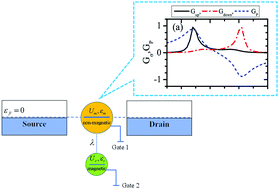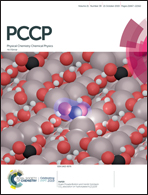Emergent electronically-controllable local-field-inducer based on a molecular break-junction with magnetic radical
Abstract
Molecular spintronics devices are receiving extensive research attention, due to their potential applications as the smallest memory and logic elements. A most fundamental issue in this field lies in generating spin polarized currents. In this communication, with the aid of the celebrated Wilson's numerical renormalization group (NRG) method, we propose theoretically a novel strategy to induce a local magnetic field that only affects the strongly correlated molecule under consideration, and could easily be manipulated through purely electronic technologies. It is also demonstrated that the device may lead to bidirectional spin polarization, where perfectly polarized spin-up and -down currents could be obtained by simply adjusting the energy level of the molecule to different regions along a single direction. Our suggested model is based on a molecular break-junction with a magnetic radical. It may provide a prospective example of a magnetoelectronics device at the molecular scale, which works without an external magnetic field.



 Please wait while we load your content...
Please wait while we load your content...